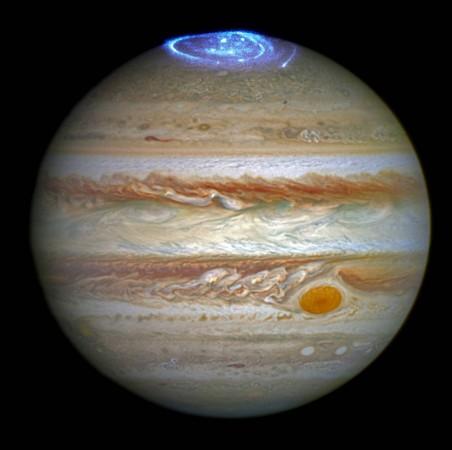
NASA's Juno mission carried out a close flyby of the gas giant Jupiter on Thursday, February 2 2017, it was the fourth time the spacecraft has flown through Jupiter's atmosphere.
Also Read: NASA, ISS slammed for allegedly covering-up UFO sightings AGAIN! [VIDEOS]
The JunoCam, and other eight science instruments on board the spacecraft were functioning well during the flight, which aided in accumulating new data that was then transmitted to Earth.
During this flight, Juno was at closest proximity or perijove, at a distance of around 4,300 kilometers (2,670 miles) above the gas giant's outer atmosphere. It was traveling at a velocity of 57.8 km/ sec (129,000 mph).
"Tomorrow may be 'Groundhog Day' here on Earth, but it's never Groundhog Day when you are flying past Jupiter," said Scott Bolton, principal investigator of Juno from the Southwest Research Institute in San Antonio, according to NASA.
"With every close flyby we are finding something new," Bolton said further.

The team analysing data from the previous flybys of Jupiter revealed that the vibrant glow of the planet, 'auroras', and its magnetic field are way stronger than previously believed.
It was also found that Jupiter's zones and belts, which give Jupiter's atmosphere a unique appearance, are also far deeper than imagined.
More peer-reviewed details about the gas giant from the earlier three flybys will be published in the upcoming months.
"JunoCam, the first interplanetary outreach camera, is now being guided with the assistance from the public -- people can participate by voting for what features on Jupiter should be imaged during each flyby," NASA officials revealed in a statement.
Presently, Juno orbits the gas giant every 53 days, it was initially planned to be 14 days. The Juno research team is figuring out ways to shorten the orbiting period of the spacecraft.
The spacecraft's next close flyby of the planet will take place on March 27, 2017.

















